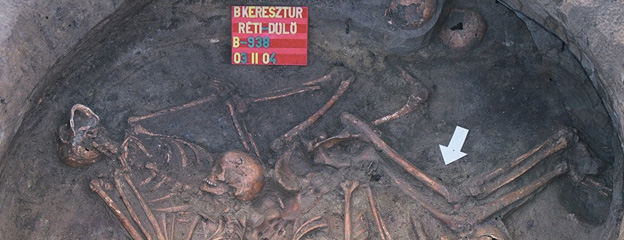Bell Beaker conference in Kiel
From 17 to 21 May 2017, the Archéologie et Gobelets, an international association specialized in the research of the Bell Beaker Period organizes its XXI. congress in Kiel (Germany), titled Think Global, Act Local! The Transformation of Spatial Interaction and Material Culture in Beaker Contexts of the 3rd Millennium BC in Europe. The five-day event focuses on the global and local aspects of the cultural relationships of the Bell Beaker Period and the socio-economic changes that can be traced behind them.
Our research team will be represented by Gabriella Kulcsár at the workshop, holding the following lecture:
Gabriella Kulcsár – András Czene – Anna Endrődi – Julia Giblin – Tamás Hajdu – Zsolt Kasztovszky – György Káli – Zoltán Kis – Kitti Köhler – Boglárka Maróti – Róbert Patay – Géza Szabó – Vajk Szeverényi – Viktória Kiss
Bell Beaker Budapest – New results of the investigation of Early Bronze Age sites along the Danube in Central Hungary
Our presentation focuses upon Early Bronze Age (2500/2400–2200/2100 BC) sites in central Hungary based on the results of our new research projects granted by the Hungarian Scientific Research Fund (Nr.108597) and by the Hungarian Academy of Sciences (Momentum Mobility program). At the beginning of this period the appearance of the Bell Beaker phenomenon caused considerable changes in certain territories of Europe. The possibility that the Budapest area was a meeting point of the Southeastern European and Central European regions always offered huge research perspectives.
There are many different analytical aspects of the network architecture and the temporal and spatial dynamics of the 3rd millennium BC Carpathian Basin. The main driving force behind the continuity or the changes of connections is the accessibility and the obtainability of different raw materials and other natural resources. The most important evidence for the existence of the geopolitics-based cultural network is the large-scale geographical availability of similar type and style pottery and metal objects. With the analytical extension of the traditional typochronological methodology and with the latest material analysis results we can enrich our knowledge about the 3rd millennium BC interaction zones. Cemeteries of this population with several hundred graves were recently excavated in the Budapest area. Concerning inhumation burials the ongoing stable isotope analyses will provide data for the mobility patterns of the investigated populations.
Our aim is to provide a more detailed chronology, including the scientific dating of cremation burials. We also study other aspects of the cemeteries, e.g. indications of social stratification and the raw material of metal grave goods, tracing the adoption of tin bronze technology in the Hungarian Bronze Age.
The conference program and the abstracts of the lectures are available at the website of the University of Kiel.








